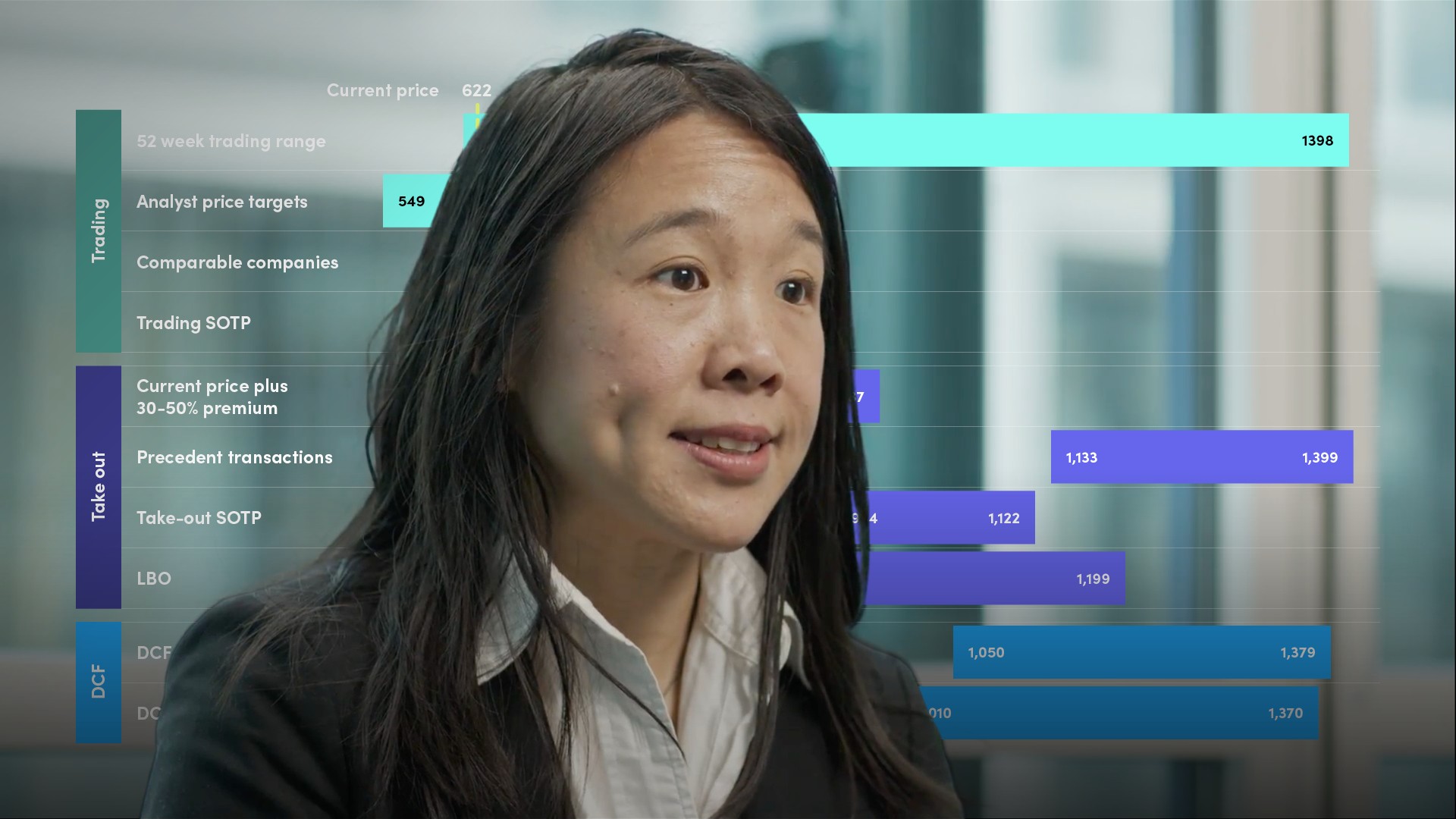
Mergers & Acquisitions (M&A) Valuation Methodologies II

Josephine Tan
20 years: M&A
In the second part of Jo's video on valuations, she discusses various valuation methods, including precedent transaction multiples, discounted cashflows (DCF), leveraged buyouts (LBO) and sum-of-the parts.
In the second part of Jo's video on valuations, she discusses various valuation methods, including precedent transaction multiples, discounted cashflows (DCF), leveraged buyouts (LBO) and sum-of-the parts.
Subscribe to watch
Access this and all of the content on our platform by signing up for a 7-day free trial.

Mergers & Acquisitions (M&A) Valuation Methodologies II
8 mins 7 secs
Introducing the ‘precedent transaction multiples’, ‘discounted cash flow’, ‘leveraged buyout’ and ‘sum-of-the-parts’ methods to value companies or businesses.
Key learning objectives:
Understand the ‘precedent transaction multiples’ method, its pros and cons
Understand the discounted cashflow (DCF) valuation method and its limitations
Understand the Leveraged Buyout (LBO) valuation method, which companies it is best suited to and the key components of the analysis
Understand the sum-of-the-parts valuation method
Subscribe to watch
Access this and all of the content on our platform by signing up for a 7-day free trial.
Explain the ‘precedent transaction multiples’ method, its pros and cons
The precedent transaction multiples valuation method (also known as “Comparable Acquisitions”) is a way to value a company or business using prices paid by acquirers rather than the traded market value. Relevant comparators are recent transactions in the same sector of a similar size with similar products and end markets operating in similar geographies. This facilitates a judgement as to the appropriate multiple ranges to apply to a company’s financial metrics to arrive at a valuation range. Pros- Usually based on publicly available information
- Valuation is not affected by temporary market conditions
- Multiples reflect actual transactions
- Public data is based on past transactions and may not be indicative of current market conditions
- Available information can be misleading because not all deal information is fully disclosed
- The multiples obtained for shortlisted transactions can sometimes vary widely
Explain the discounted cashflow (DCF) valuation method and its limitations
The DCF valuation method discounts projected future cash flows to arrive at a Net Present Value (NPV). It is useful for valuing businesses and assets that have limited comparables, no near-term cash flows or which have a known finite life. DCF valuations are based on a large number of assumptions and forecasts and are very sensitive to them, and can vary widely if assumptions are changed or incorrect.Explain the Leveraged Buyout valuation method, which companies it is best suited to and the key components of the analysis
LBO valuation analysis is used for companies or businesses from the perspective of a financial sponsor (private equity firm), which finances the acquisition with debt. There are five key parts of an LBO analysis:- The sources and use of funds for an acquisition – how much will be financed with debt vs. equity, and how will the funds be used (usually acquisition cost and debt repayment)
- Adjusting the balance sheet for new debt and equity
- Building a model that projects the cashflows for the company or business for the term of the investment and determining how much debt is paid down each year
- Calculating the exit value less debt that needs to be repaid
- Calculating the return after all the debt has been repaid. The maximum valuation at which a sponsor can acquire a company or business is set by target returns after paying off debt
Explain the Sum-Of-The-Parts valuation method
A sum-of-the parts valuation is a way of determining how much a company is worth if each of its underlying businesses or subsidiaries is valued separately and added up. A sum-of-the-parts valuation is useful for companies that have:- Well-defined business segments that are reported separately
- Holding companies or conglomerates with many different companies
- Companies with distinct assets
Subscribe to watch
Access this and all of the content on our platform by signing up for a 7-day free trial.

Josephine Tan
There are no available videos from "Josephine Tan"






















